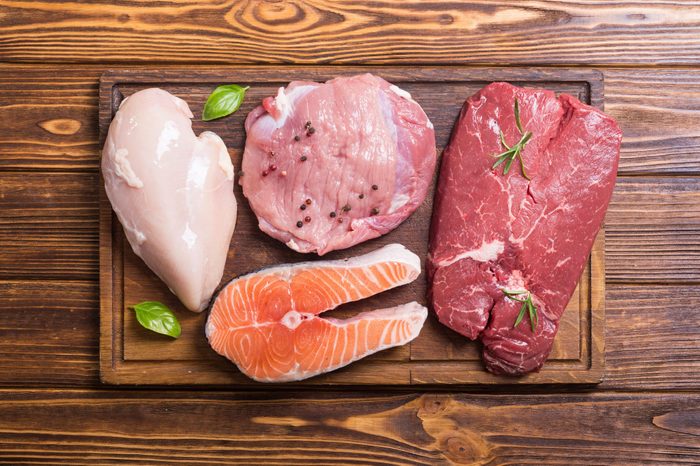
Do You Wash Meat Before Cooking?
To rinse The U.S. Department of Agriculture (USDA) explains that the main reason people should avoid this is because it actually increases the chance of cross-contamination, leaving you susceptible to food borne illnesses. They go on to say that meat and poultry are already cleaned during processing, so washing it with soap or water isn’t necessary, and soap could contaminate your food with harmful chemicals.
Instead, the best way to kill off any bacteria from your meat is to cook it to an appropriate internal temperature. Here’s your complete guide to food-safe cooking temperatures.
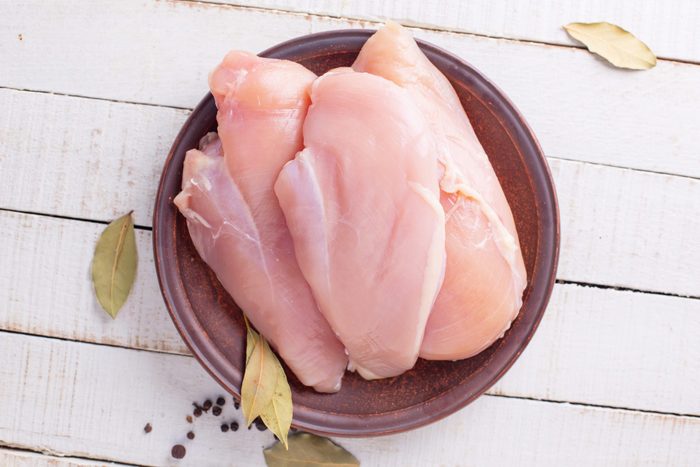
Chicken
Do you usually wash your chicken in the sink before cooking it? If so, it’s time to quit this habit. Not only does it not eliminate any bacteria or pathogens off of your food, it can actually increase your risk of contamination.
“By washing raw chicken in the sink, you are likely to spread the bacteria all over your kitchen, including clean surfaces like countertops, through splashing and dripping,” says Eric Sieden, director of nutrition and food services for Glen Cove, Plainview and Syosset Hospitals in New York. The only truly effective way to get rid of bacteria is to cook it, and the rule always extends to raw fish and other meats, too. Read more about why you should never wash chicken.
If you’re new to cooking, we’ve got the perfect guide on cooking chicken to help you out. Don’t stress, you’ll still have a flavorful chicken without having to rinse it!
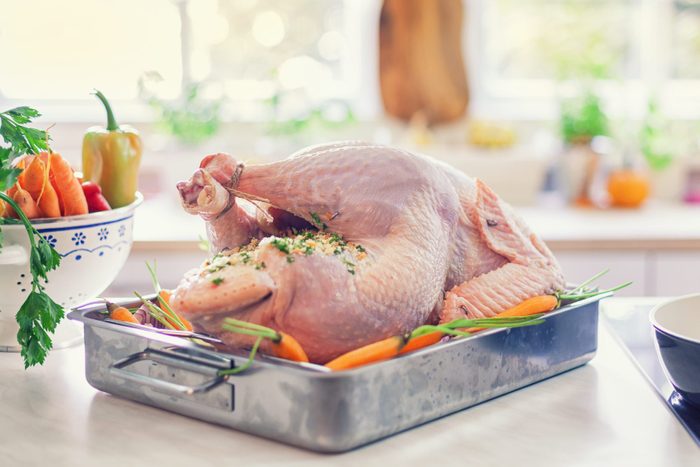
Turkey
While you’ll want to wash most of the produce when preparing for Thanksgiving dinner, you should never wash your turkey. Just like chicken, there is the risk of spreading bacteria while washing your poultry. Instead, the USDA recommends washing your hands and any surfaces the turkey’s juices may come in contact with with soap and warm water. Don’t forget to have a food thermometer on hand to make sure the internal temperature has reached at least 160°F.
The only exception to this rule is if you are brining a turkey. You must rinse the brine off before putting the turkey in the oven. See what the next steps are with our guide on how to cook a turkey so you’ll be ready for the next Thanksgiving.
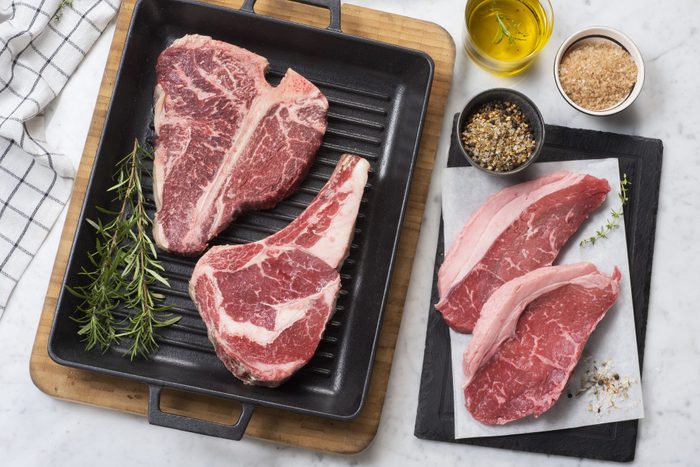
Steak
Along with being just as dangerous as washing chicken in terms of spreading bacteria, you’re also actually adding moisture to the meat when you wash it. “The added moisture during washing will create steam that will also affect taste,” Sieden warns. So if you’re looking for that perfect sear, keep the water away.
If you just can’t kick the habit of washing that rib-eye, pat it down with a paper towel before cooking to get rid of excess moisture, and always sanitize your sink and nearby surfaces afterward. If you’re planning on marinating meat, the USDA advises to keep it in the fridge and always take care to prevent cross-contamination from the liquid that the meat was in.
Avoiding the water rinse with your raw steak will help make this juicy cast-iron steak taste even better.
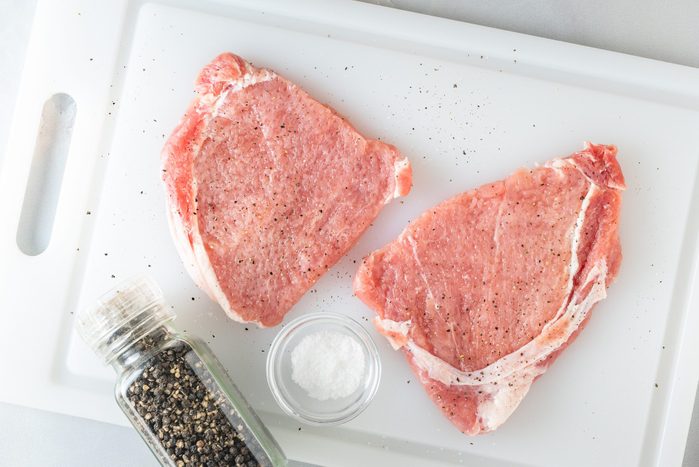
Pork
Like other poultries, pork is safe to cook straight from the packaging and does not need to be rinsed. According to the USDA, internal temperatures for pork, roasts and chops should reach 145° with a three-minute resting time. Try one of our best pork chop recipes the next time pork’s on the menu.
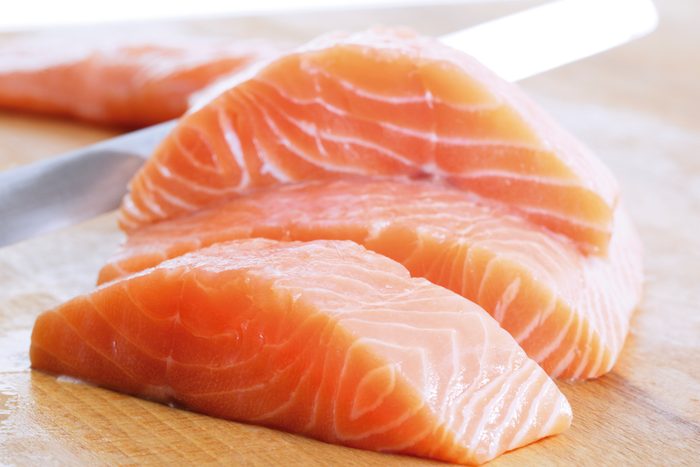
Salmon
Just like with chicken and red meat, salmon should never be rinsed before cooking. While you may think you’re removing bacteria, rinsing salmon in your kitchen sink could spread bacteria to surfaces that other food may touch. To avoid this potential food-borne illness risk, skip the rinsing and prepare your salmon straight from packaging. To kill any remaining bacteria through the cooking process, make sure your salmon reaches an internal temperature of 145°.
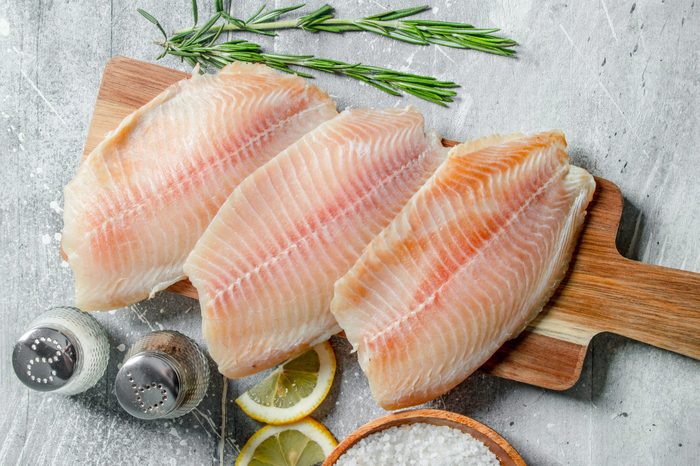
Other Fish
The same rules for salmon apply to all fish. Do not risk the spread of bacteria by rinsing your seafood. Instead, cook the fish to an internal temperature of 145°. Learn the next steps of what to do when you’re preparing fish and give one of these easy fish recipes a try—just remember to skip the rinsing!
